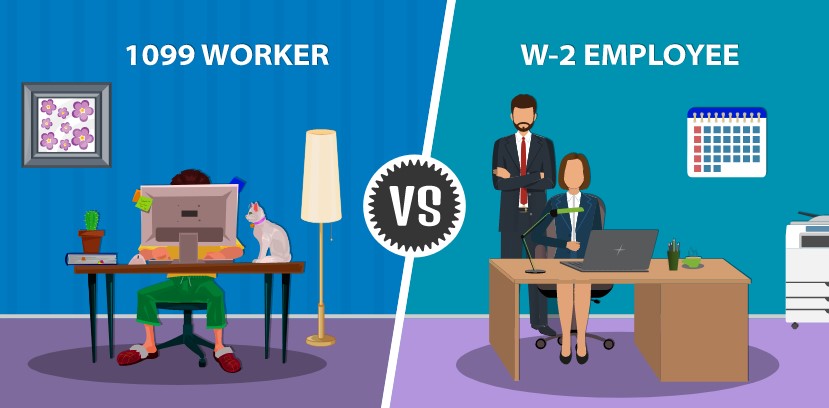When hiring employees, there are two major types: W-2 and 1099 workers. Understanding the difference between these employee types is vital to making the best hire for your business.
Independent contractors are often used when businesses need to solve a problem that doesn’t require a full-time employee. However, they can have a few disadvantages over W2 employees.
Taxes on Payments
When it comes to taxes, businesses have several different ways to pay them. Online tax software, paper filing, and an accountant are all options.
Independent contractors also don’t have to pay for employer-sponsored benefits like workers’ compensation and unemployment insurance, saving your business money. And you can also avoid having to offer a retirement plan.
The fundamental difference between 1099 and w2 is that independent contractors are responsible for payroll taxes. They also pay Social Security and Medicare taxes, split 50-50 between employers and employees.
One advantage of hiring 1099 contractors is that they can often start working within days of receiving an assignment. Training new hires can save your company time and money.
Another benefit is that they can work on multiple projects simultaneously, which can help you meet your deadlines. And since they don’t have to stay on a company’s payroll, you can terminate them easier if needed.
Whether you use software or an accountant to prepare your taxes, paying your estimated taxes on time is essential.
Payroll Taxes
Payroll taxes are a group of federal, state, and local income taxes that employers must deduct and remit from their employees’ wages. They include social security, Medicare, unemployment insurance, workers’ compensation, and more.
Paycheck taxes affect all of your company’s employees, whether part-time or full-time. Each is responsible for filling out a W-4 form, which tells you how much tax to withhold from each paycheck. This amount is then remitted to the IRS.
On the other hand, independent contractors are self-employed and have no employer responsibility for their social security and Medicare taxes. They must also report their earnings on a 1099 form at the end of each year.
Generally speaking, independent contractors offer specific services defined by a written contract. They can work on one project at a time or serve multiple clients, providing them with a service that fits within their skill set and expertise.
Many small businesses have used independent contract workers instead of regular employees for specific jobs and projects. It allows them to reduce business costs and take advantage of the skills that are available to them.
However, it’s important to remember that switching from a W2 employee to a contractor can lead to a tax audit by the IRS if you need clarification on your workers’ status. Therefore, it’s best to consult your lawyer and accountant before making this change.
Tax Withholding
Tax withholding refers to the money that an employer takes out of an employee’s paycheck each pay period and sends to the government on behalf of that individual. It makes paying taxes easier so that a person does not have to wait until the end of the year to pay income tax.
The amount that an employer withholds for federal income tax depends on several factors, including the information the worker has provided on their Form W-4 and the amount they expect to owe. It can also be adjusted for common lifestyle changes like a new job, claiming a child tax credit, or getting married and filing jointly.
The employer must consider the degree of control an employee has over the work when determining whether to classify a worker as a W2 employee or a 1099 independent contractor. If the company controls most of how and when a worker does their job, it’s more likely that they are a W2 employee.
However, if the person has a reasonable degree of independence and they have the equipment and supplies to complete tasks, they are most likely a 1099 independent contractor. This classification affects the way that both parties are taxed, as well as a business’s ability to offer employees benefits.
Tax Forms
It would help to comprehend how tax forms affect your organization, whether you are an employer or an independent contractor. Using suitable forms can protect you and your workers from penalties or other issues with the IRS.
The regular salaried employee receives a W2 form that shows their wages during the year, including income taxes withheld by their employer. The W2 also reports their taxable and non-taxable benefits, like Social Security and Medicare.
On the other hand, a self-employed independent contractor receives a 1099 form that reports their earnings to the IRS. These contractors generally provide services as defined by a written contract and can control the timing and method of delivering their services.
If you hire employees and have a clear understanding of how you and your workers are classified, it will help you manage payroll taxes more efficiently. It will also improve your company’s productivity and bottom line. You will avoid paying unnecessary taxes and wasting valuable time with paperwork.
